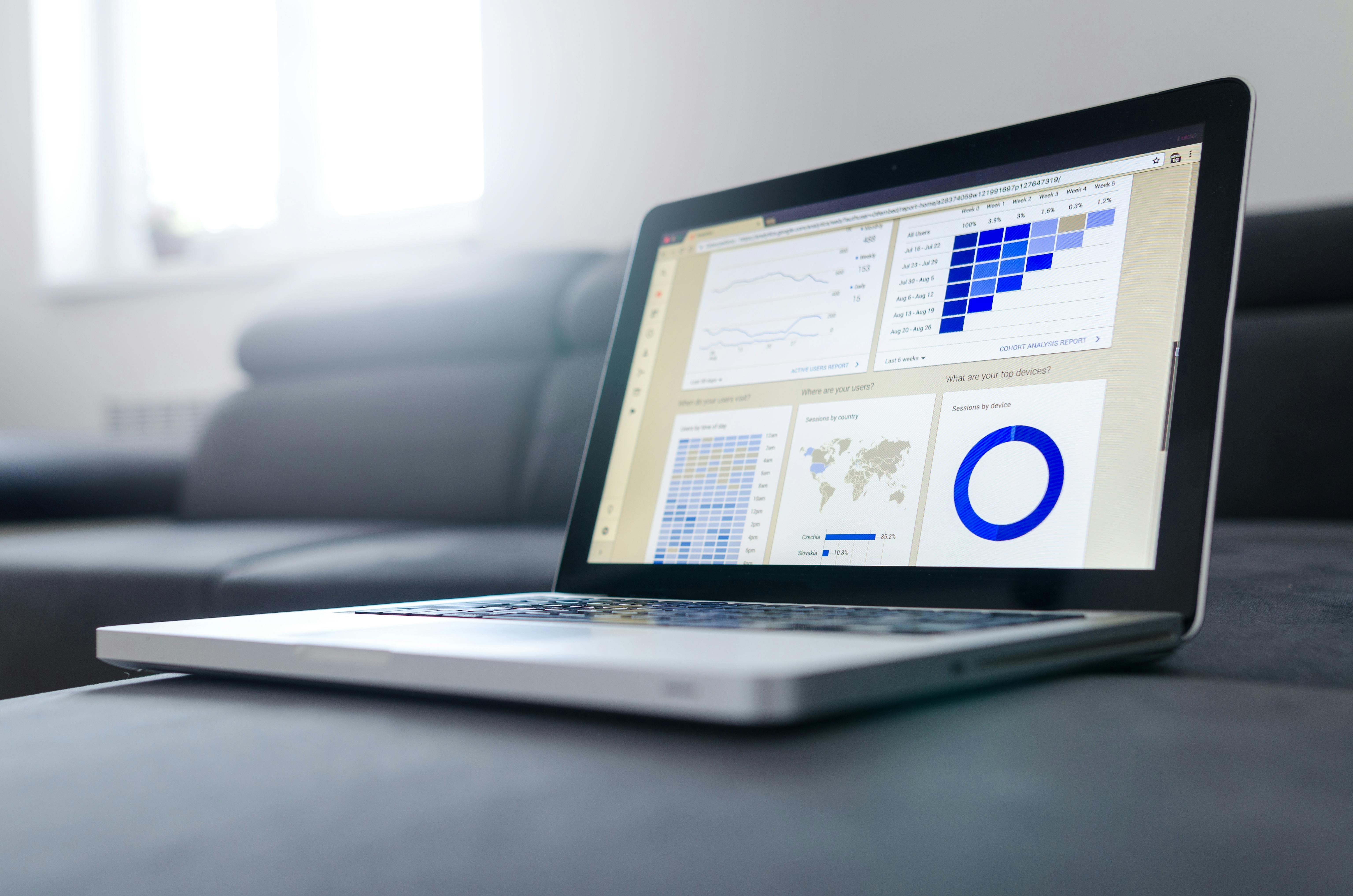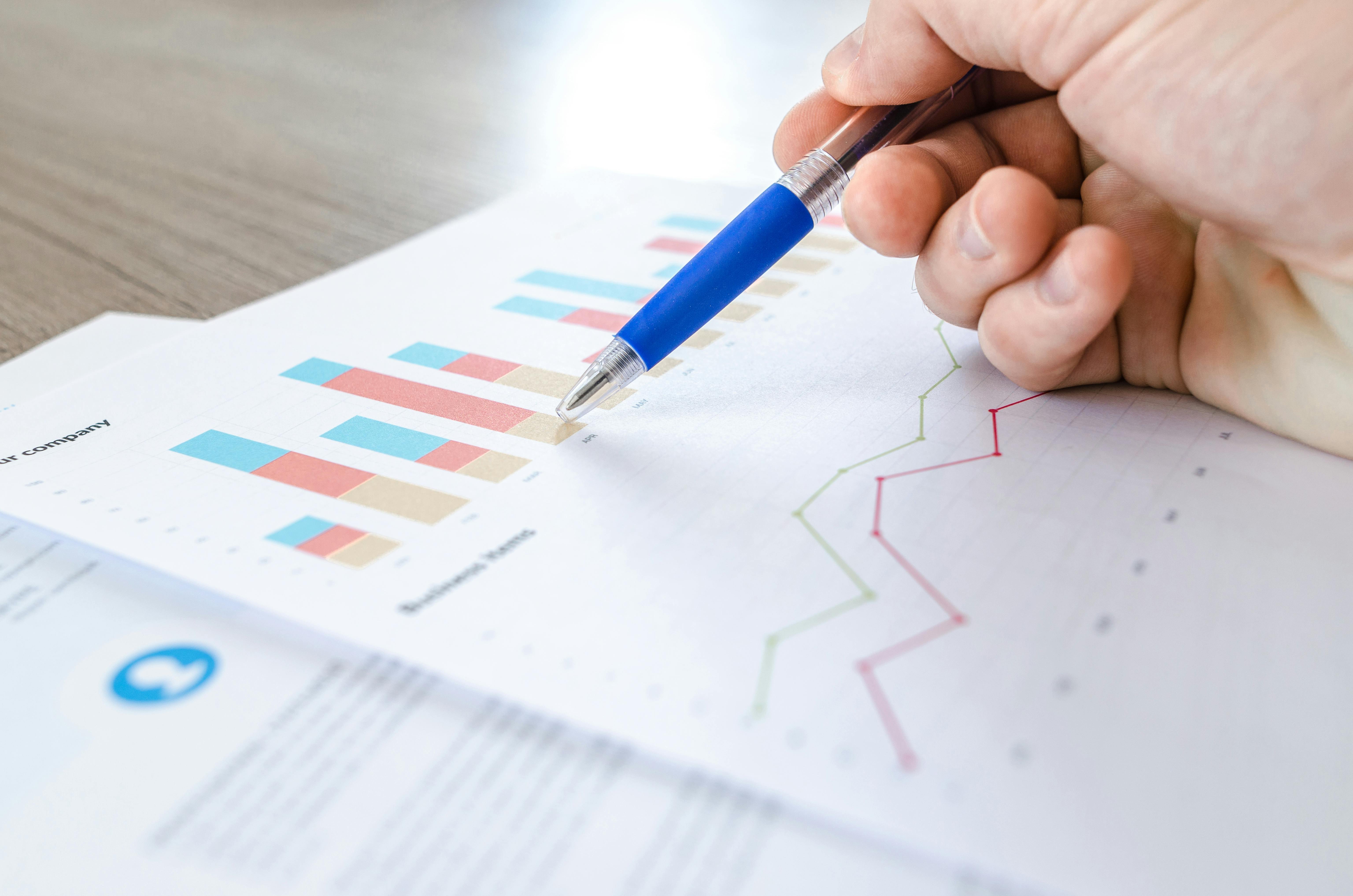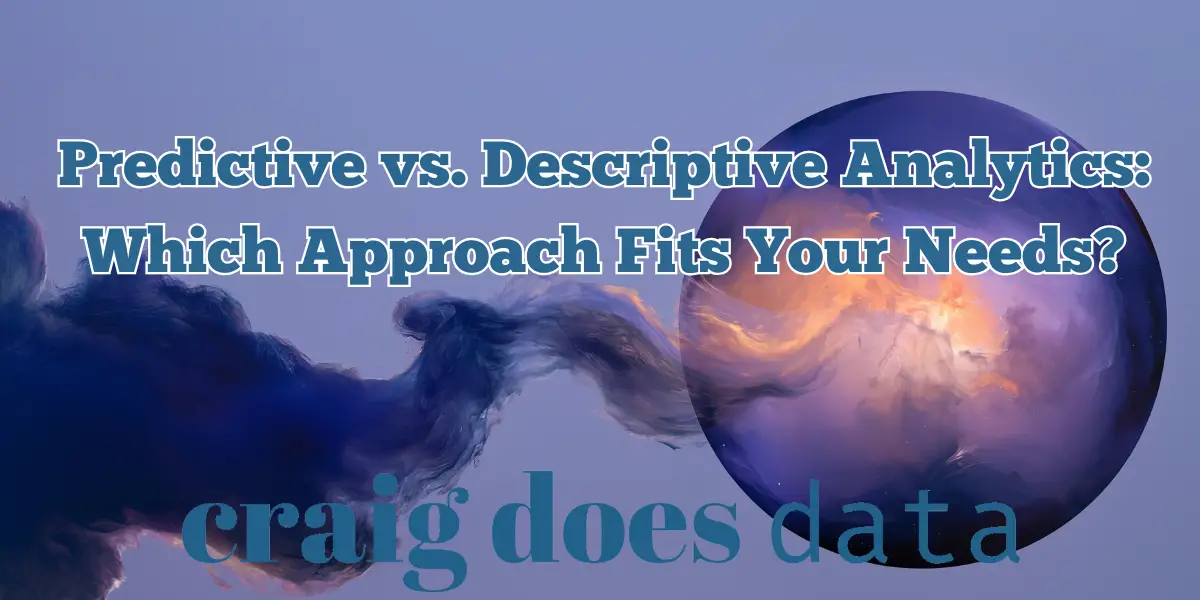Predictive vs. Descriptive Analytics: Which Approach Fits Your Product Needs?
In today's data-driven world, businesses large and small rely on analytics to navigate complex markets, identify lucrative opportunities, and continuously refine their product strategies. Whether you're overseeing a new tech startup or managing a well-established enterprise product, making data-informed decisions is crucial for sustained growth. The rise of powerful analytics tools and widespread access to data has led to two primary methods that product teams frequently consider: descriptive analytics and predictive analytics.
Choosing the right analytical approach can significantly impact how you understand customer behavior, plan for future trends, and ultimately guide your product development. Descriptive analytics helps you make sense of what has already happened, giving you clear insights into key performance metrics, user engagement levels, and operational effectiveness. Predictive analytics, on the other hand, takes your historical data a step further—modeling it to predict future events, trends, or customer actions.
So which approach is best suited for your product needs? In this article, we'll compare the fundamental concepts, applications, benefits, and limitations of descriptive and predictive analytics. By exploring real-world examples, you'll discover how these methods can be employed to maximize value, optimize decision-making, and, ultimately, boost your product's performance in the marketplace.

1. Understanding Analytics
What is Analytics?
At its core, analytics refers to the systematic examination of data or statistics with the goal of uncovering meaningful patterns, drawing conclusions, and enabling informed decision-making. In practical business settings, analytics can involve everything from simple spreadsheet tracking of sales figures to complex machine learning algorithms that assess thousands of variables in real time. Ultimately, the practice of analytics is about transforming raw data into actionable insights.
Over the years, the umbrella term “analytics” has expanded to encompass several distinct categories:
- Descriptive Analytics: Provides insights into what has happened in the past, typically using visualization and reporting.
- Diagnostic Analytics: Looks deeper into data to understand why something happened, often employing techniques like drill-down analysis.
- Predictive Analytics: Uses historical data and statistical algorithms to forecast future events or trends.
- Prescriptive Analytics: Builds on predictive insights to recommend the best course of action, often incorporating optimization and simulation.
These categories are not exclusive; they often overlap or feed into one another. Yet, when product teams discuss analytics strategies, it’s typical to focus on descriptive and predictive analytics first, as these two form the backbone of many data initiatives. This article will delve into how each approach works, highlighting where they can provide the most value.
Importance of Analytics in Product Management
For product managers, analytics serves as a navigational compass. By providing clarity on performance metrics, user behaviors, and potential outcomes, analytics ensures that decisions are not merely based on hunches or incomplete information. Rather, every feature release, marketing campaign, or strategic pivot can be backed by data-driven reasoning.
Common goals that businesses and product teams often target through analytics include:
- Improving user engagement and retention.
- Identifying new market opportunities or customer segments.
- Boosting operational efficiency or cutting unnecessary costs.
- Enhancing cross-selling or upselling potential.
- Maintaining competitive advantage through innovation.
As a result, product managers and stakeholders across the business landscape lean on analytics as a decisive tool. Whether you opt for descriptive or predictive methods—or a mix of both—anchoring your product decisions in reliable, analyzed data can be the difference between a successful product trajectory and one that flounders amidst market uncertainties.
2. Descriptive Analytics
What is Descriptive Analytics?
Descriptive analytics is the process of translating large sets of raw data into clear, understandable summaries. In essence, it looks backward and answers the question “What happened?” or “What is happening right now?” This approach might involve calculating and reporting key performance indicators (KPIs), such as monthly active users, revenue growth, or customer satisfaction scores. By transforming numbers and statistics into dashboards, visual reports, or summary metrics, descriptive analytics helps product teams grasp the current state of affairs quickly.
For many organizations, descriptive analytics acts as the first stepping stone into a data-driven culture. Companies that begin analyzing data often start by implementing descriptive methods to glean insights from historical performance metrics. These insights can provide a foundation upon which more advanced analytics approaches—like predictive or prescriptive—are built.

Applications of Descriptive Analytics
Practically every industry today employs descriptive analytics in some form. Here are a few examples:
- Retail: Retailers track daily sales, monitor inventory levels, and measure customer purchase frequency. These descriptive metrics reveal trends such as best-selling products or peak shopping periods.
- Healthcare: Hospitals and clinics gather statistics on patient admissions, average lengths of stay, and readmission rates. Summarizing these data points highlights areas where patient care might be improved or resources better allocated.
- Finance: Banks and financial institutions generate daily transaction summaries and balance sheets. By examining trends, they can quickly detect anomalies, such as sudden increases in deposit withdrawals.
- Software and SaaS: In digital product contexts, descriptive analytics helps monitor traffic, user engagement, time in-app, and feature usage. This is invaluable for product teams who need to understand how users interact with their platform.
Various tools and techniques support these descriptive functions. For instance, data visualization platforms like Tableau, Power BI, and Looker make it easier to identify trends or anomalies at a glance. Simple spreadsheet software can also perform descriptive analytics on a smaller scale. SQL (Structured Query Language) queries and business intelligence (BI) tools are likewise commonplace for summing up large datasets, creating visual dashboards, or producing routine reports.
Benefits and Limitations of Descriptive Analytics
One of the greatest advantages of descriptive analytics is its simplicity. It often relies on straightforward measures—like counts, sums, averages, and percentages—that can be easily understood by a broad audience. Stakeholders from non-technical backgrounds, such as marketing or executive leadership, can quickly interpret dashboards and charts to understand what is happening within the business. This fosters a data-aware culture where key metrics are monitored continuously, and progress is measured consistently against established baselines.
Despite these strengths, descriptive analytics also has its limitations. Most notably, descriptive methods only reveal past and present states; they do not forecast future possibilities. If your organization strictly relies on descriptive analytics, you risk overlooking emerging trends until they have already significantly impacted your metrics. Furthermore, descriptive analytics does not necessarily explain the underlying causes behind these numbers, leaving you to investigate deeper with diagnostic techniques if you want to find out why something happened.
In summary, descriptive analytics lays the groundwork for understanding what has taken place in your product’s lifecycle. It’s relatively easy to implement and interpret, making it a crucial first step for data-driven teams. However, if you’re aiming to stay ahead of market shifts and make forward-looking product decisions, you may need to augment your capabilities with predictive analytics to anticipate what might happen next.
3. Predictive Analytics
What is Predictive Analytics?
Predictive analytics aims to answer a forward-looking question: “What is likely to happen in the future?” Instead of solely presenting past and present data, predictive analytics uses historical datasets, statistical algorithms, and machine learning techniques to create models capable of forecasting upcoming events, trends, or behaviors. By identifying patterns within past data, it extrapolates those patterns to predict future outcomes with a certain level of probability.
In recent years, the accessibility of powerful machine learning libraries (such as TensorFlow, PyTorch, and scikit-learn) and the availability of cloud-based data platforms have accelerated the adoption of predictive analytics across various industries. While implementing predictive analytics can be more resource-intensive than descriptive analytics, the payoff is the ability to be proactive rather than reactive in your product and business strategies.

Applications of Predictive Analytics
Predictive analytics finds applications in nearly every sector. Here are a few notable use cases:
- Fraud Detection: Financial institutions rely on predictive models to flag anomalous transactions that might indicate fraud, enabling them to take immediate action before losses escalate.
- Customer Behavior Prediction: E-commerce platforms may use predictive analytics to anticipate which customers are most likely to churn or which products a user is likely to buy next. This insight informs targeted marketing campaigns, personalized offers, and strategic product recommendations.
- Demand Forecasting: Manufacturing and supply chain organizations predict product demand, enabling them to optimize inventory and reduce stockouts or overstocking. This has a direct impact on profitability and customer satisfaction.
- Healthcare Outcome Prediction: Hospitals apply predictive models to identify patients at higher risk for certain complications, allowing for targeted interventions and improved patient care.
- Predictive Maintenance: Businesses with large-scale machinery (e.g., factories, airlines) use data analytics to forecast equipment failures, thereby reducing downtime and maintenance costs.
Implementing predictive analytics typically involves collecting and cleaning historical data, selecting the right predictive model (e.g., regression, decision trees, neural networks), and iteratively refining that model to maximize accuracy. Tools like Python's scikit-learn library or R’s predictive modeling packages are commonly used by data scientists, while no-code/low-code platforms allow business users to experiment with predictive features without extensive programming knowledge.
Benefits and Limitations of Predictive Analytics
A major benefit of predictive analytics is the ability to make more proactive, future-oriented decisions. Instead of waiting for a business metric to drop before reacting, product teams can anticipate shifts in customer preferences or demand patterns. This foresight can translate into competitive advantages, whether it’s launching new features at an opportune time or preemptively solving potential customer pain points.
Another advantage is more refined risk management. By modeling likely future scenarios, companies can identify and mitigate risks before they become costly problems. For instance, anticipating a spike in server usage or user demand can help you prepare your infrastructure, ensuring a smoother experience and fewer outages.
However, predictive analytics does come with its constraints. It demands higher data quality and more complex data pipelines, as inaccurate or insufficient data can lead to poor predictions. The implementation process often requires specialized skill sets—data scientists, machine learning engineers, or analysts with advanced statistical knowledge. Additionally, predictive models are not crystal balls; they rely on assumptions embedded in historical data and may become outdated if the market or user behavior changes drastically. Continuous retraining and validation of predictive models is necessary to maintain their accuracy over time.
In sum, predictive analytics offers a powerful way to look into potential futures, enabling data-driven forecasting and proactive planning. While it can be resource-intensive and requires high-quality data, it brings a level of forward-thinking capability that descriptive analytics alone cannot match.

4. Choosing the Right Approach for Your Product Needs
Factors to Consider When Choosing Between Predictive and Descriptive Analytics
Deciding whether to focus on descriptive or predictive analytics (or use a blend of both) depends on several key factors:
- Business Objectives: If your immediate goal is to understand the status quo—how users engage with your product, how revenue trends have evolved, or which features are most commonly used—descriptive analytics may suffice. If you need to forecast or plan proactively for upcoming market shifts, predictive analytics becomes more critical.
- Data Availability and Quality: Robust predictive models require large, high-quality datasets. If your data collection is still maturing or your dataset is small and inconsistent, descriptive analytics might be the more realistic option in the short term.
- Resource Constraints: Predictive analytics often necessitates specialized skills, additional computational resources, and a more involved data infrastructure. Before diving into predictive modeling, ensure your organization can support these requirements effectively.
- Time Horizon: Some products require faster insights into daily operations, while others benefit more from future-looking forecasts. Evaluate whether real-time or near-real-time insights are crucial for your decision-making.
- Alignment with Business Strategy: Analytics initiatives should reinforce broader strategic goals. If your company aims to innovate and stay ahead of trends, predictive analytics offers significant advantages. If cost management and incremental improvements are the priority, descriptive analytics may be enough initially.
By weighing these considerations, you can map your product’s analytics strategy to the unique demands and goals of your organization. In many cases, a phased approach works best: start with strong descriptive analytics to build foundational insights, then scale into predictive modeling once your data pipelines and team skill sets are ready.
Case Studies and Examples
Real-world examples can offer clarity on how businesses successfully apply descriptive and predictive analytics:
- Descriptive Analytics in E-commerce: An online retailer wanted to improve its homepage experience. They used descriptive analytics to identify peak shopping hours, top product categories, and bounce rates per landing page. By examining these metrics, the retailer restructured its homepage layout to better showcase popular categories during peak hours. The result was a modest but immediate lift in conversion rate and decreased bounce rates.
- Predictive Analytics in a SaaS Platform: A software-as-a-service company needed to reduce customer churn. After collecting detailed user engagement data, they built a predictive model that identified customer behaviors correlated with higher churn risk—lack of product logins over a given period, reduced usage of key features, and minimal interactions with customer support. Armed with these insights, the company created targeted retention campaigns, sending personalized offers or educational resources to at-risk users. Over the next quarter, churn rates dropped noticeably, demonstrating the power of predictive analytics.
These examples illustrate two distinct ways analytics can transform decision-making. In the e-commerce scenario, the retailer needed clear descriptive insights to refine immediate design and operational decisions. In the SaaS example, future-oriented strategies were critical, so predictive modeling guided proactive user engagement initiatives.
Combining Predictive and Descriptive Analytics
In many instances, integrating both descriptive and predictive analytics can yield even greater value. A combined approach might look like this:
- Descriptive Insights First: Use descriptive methods to monitor current performance and spot emerging trends. This could involve weekly or monthly dashboards that reveal anomalies in user sign-ups or spikes in error rates.
- Predictive Follow-Up: Once a pattern is identified, apply predictive models to forecast how this trend could evolve. For instance, if sign-ups are dropping, a predictive model could estimate how this decline impacts revenue growth over the next quarter.
The synergy of descriptive (observing “what’s happening now”) and predictive (anticipating “what might happen next”) ensures your product decisions are grounded in solid evidence and future-ready forecasting. This layered approach can be especially beneficial in competitive markets where you can’t afford to be purely reactive.

Conclusion
Descriptive and predictive analytics represent two powerful, yet distinct, perspectives on your product data. Descriptive analytics helps you understand and communicate what has happened, creating a foundation of knowledge and performance metrics that guide your immediate actions. Predictive analytics, on the other hand, propels your vision into the future, offering forecasts and probabilities that inform strategic, long-term decision-making.
When deciding between these two approaches, consider your current data maturity, the resources at your disposal, and—most importantly—the objectives you need to achieve. For many organizations, descriptive analytics is the logical starting point, laying the groundwork for a more advanced predictive phase. Others may already have the data infrastructure and expertise needed to implement predictive models and move ahead of the curve.
Whichever route you choose, the ultimate goal remains the same: to use data in a way that drives continuous product improvement and sustained market relevance. In a rapidly evolving digital landscape, it’s essential to be prepared not just for what is currently happening, but for what may lie ahead.
What now?
Ready to harness the power of data for your product strategy? Explore our additional resources for a deeper dive into analytics methodologies.
Click below to read more case studies and discover best practices. Don’t miss the opportunity to turn data into actionable knowledge that drives real product growth.

